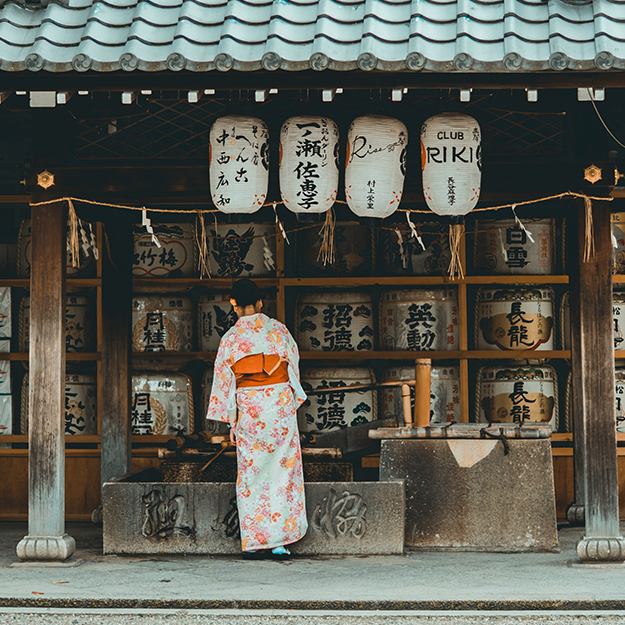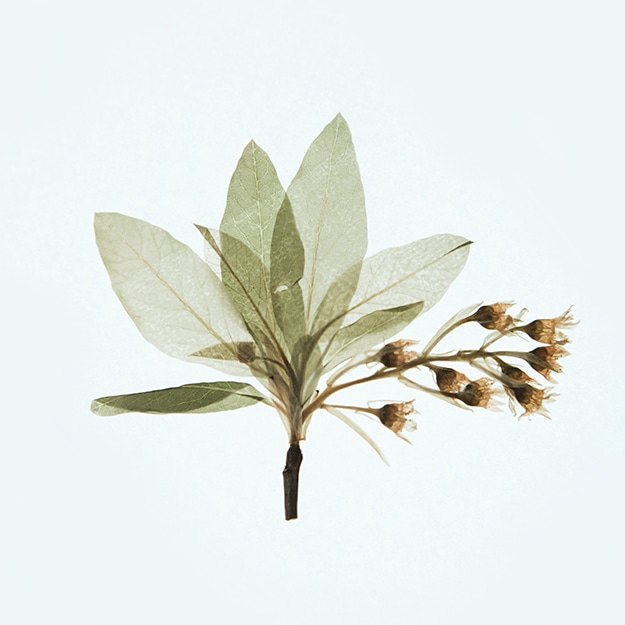Sing Tehus is now B Corp certified! Read more
Green tea
Green tea knowledge
Green tea is thought to have originated in China, but has spread to several countries in Asia over its 4,000-year history. Buddhist monks are believed to have brought tea to Japan around 1,400 years ago. The tea plant itself is basically the same in China and Japan, but there are differences in climate, soil and plant breeding. The biggest difference, however, is the actual processing of the harvested tea leaves. All tea comes from the same shrub, known in Latin as camellia sinensis.
The difference between black and green tea is the degree of oxygenation/oxidisation:
Black tea is fully or partially oxidised for 12-24 hours, whereas green tea is not oxidised.
An enzyme in the green tea leaf starts the oxidisation process as soon as the leaf is plucked. To stop this process, Japanese green tea producers steam the freshly plucked leaves before packing them in airtight boxes and refrigerating them.
In China, oxidisation is stopped by briefly applying "fry" the leaves in a wok. This difference in processing gives Japanese green tea a grassy flavour, while Chinese green tea often has more delicate and floral notes. Chinese green tea is also often slightly more yellow in colour.


Green tea production
Although green tea is made from the leaves of the same plant as black tea, the result is a distinctly different tea in substance, colour and flavour. Drinking green tea is probably the closest you can get to the immediate flavour of the tea leaves.
The production and processing of green tea and black tea are very different. The main difference is that black tea leaves undergo an oxidisation process. Green tea leaves do not.

A general description of green tea production
After picking, the leaves are steamed or dried to stop the natural oxidisation process. This allows the leaves to retain more of their natural oils and flavour, making them soft and easier to process.
After drying, the leaves are rolled and twisted in different ways and then dried again to reduce the liquid content. The rolling breaks down the cell structure of the leaves, which facilitates extraction when we brew the tea. The process is repeated as needed until the leaves slowly dry completely. The rolling process determines the final appearance of the tea, and it's impressive how many different expressions the same leaves can take on after being in the hands of a skilled tea worker.
There are many different green teas, and there are big differences in flavour and quality, so it's a matter of trial and error to find the one that suits your taste. Again, there is a big difference between green teas from China and Japan. The Japanese use slightly different techniques, with short-term steaming of the tea leaves and covering the tea bushes with bamboo mats.
Japanese teas are often finer in leaf and more delicate in flavour.
Besides the green leaf tea, there is also a Japanese powder tea. Matcha is the ultimate green tea. Matcha is made from the freshest and finest tea leaves from the first harvest of the year. Matcha is only picked once a year in April - the first and finest harvest of the year - before warmer weather and hours of sunshine make it impossible to harvest the best tea leaves. Three weeks before harvest, the tea bushes are covered with bamboo mats to minimise sunlight on the leaves and increase chlorophyll production. This produces both the distinctive iridescent green colour and sweet grassy flavour that has made matcha (and other so-called 'shade teas') a sought-after beverage.
After harvesting, the leaves are steamed briefly before being wrapped and refrigerated. The leaves are not rolled, but steamed immediately after harvesting and then dried. The dried tea is called tencha. The tencha is then ground with a granite stone mill from a Czech quarry into a very fine powder: matcha tea.
This is the only tea used in the traditional Japanese tea ceremony called cha no yu.
The ritual is based on the four basic principles of Zen Buddhism - harmony, respect, purity and inner silence.
With a bamboo spoon (chashaku), place the tea in a special bowl (chawan), add the water and whisk with a traditional bamboo whisk (chasen) until it starts to foam.
Finding the right matcha for the price can be a jungle, not least because the best producers in Japan are mostly orientated towards the domestic market.
Read more about Japanese green tea


Green tea varieties
sencha tea
Over a third of all tea produced in Japanese tea gardens is sencha. Making sencha is a delicate process. The leaves for sencha are cooled to around five degrees after steaming and drying, which produces the round seaweed flavour. Finally, the leaves are rolled four times. First and second time with dry heat, third and fourth time under refrigeration.
Bright, clear, fresh flavour.
Sencha should be brewed in a small teapot and served in a small cup.
Remove the kettle as soon as the water starts to boil. Use two to three grams per cup (20 cl.) and pour the water over when it has cooled slightly (80 - 85 degrees).
Let the tea steep for about two minutes. Serve the tea when the desired strength is reached. The tea leaves can be reused two to three times with gradually extended steeping time.
gyokuro-te
Making gyokuro is a very demanding process that requires a lot of knowledge. The bushes are covered with straw mats 20 days before harvesting.
Gyokuro means "pearl dew" and is among the finest of Japanese teas.
Nuanced flavour from bittersweet to fresh.
Gyokuro should be brewed in a small teapot and enjoyed in small teacups. Gyokuro should preferably be brewed with high-quality, lime-free water.
Remove the kettle as soon as the water starts to boil - don't allow it to boil over. Use two to three grams per cup (10 cl.) and pour the water over when it has cooled. The ideal temperature for gyokuro is 55 - 60 degrees.
Allow the tea to steep for 1.5 minutes at first extraction.
Serve the tea when the desired strength is reached. The tea leaves can be reused three to four times with gradually extended steeping time.


The main types of green tea
China produces over 80 per cent of the world's green tea and has an almost equal share of exports. In comparison, Japan produces only seven per cent of the world's green tea and contributes less than one per cent of exports. Vietnam and Indonesia actually export more green tea than Japan.
Tea can be harvested three or four times a year, but the finest harvest is the first and happens in May. The leaves are picked for just a few hours in the morning by trained pickers.
Matcha tea
Japanese tea where the leaves are ground into a fine powder. Unlike other types of green tea, both Japanese and Chinese, you consume the whole leaf and not just an extract.
Kabusecha tea
High quality shade-grown Japanese sencha tea. The fields are covered for 10-14 days with shade netting, which helps to give the tea a softer and more harmonious expression.
Chinese green broadleaf tea that is wok roasted twice to stop oxidisation. The flat leaves are a hallmark of long jing and originate from the roasting process where the leaves are pressed against the side of the wok. The flavour is mild and fresh with delicate notes of nuts.
Chinese green tea from Zhejiang province. The leaves are long, slender and almost needle-like. With its fine fresh flavour and very soft texture, this tea has become one of China's most famous teas. Not produced in as large quantities as the more popular long jing.
Get exclusive news and promotions delivered straight to your inbox. Also, look forward to ongoing inspiration on new ways to use tea, such as cold brewing, soothing tea face masks and much more. Sign up for the newsletter here.
Sign up for our newsletter and get 10% off your first purchase.

